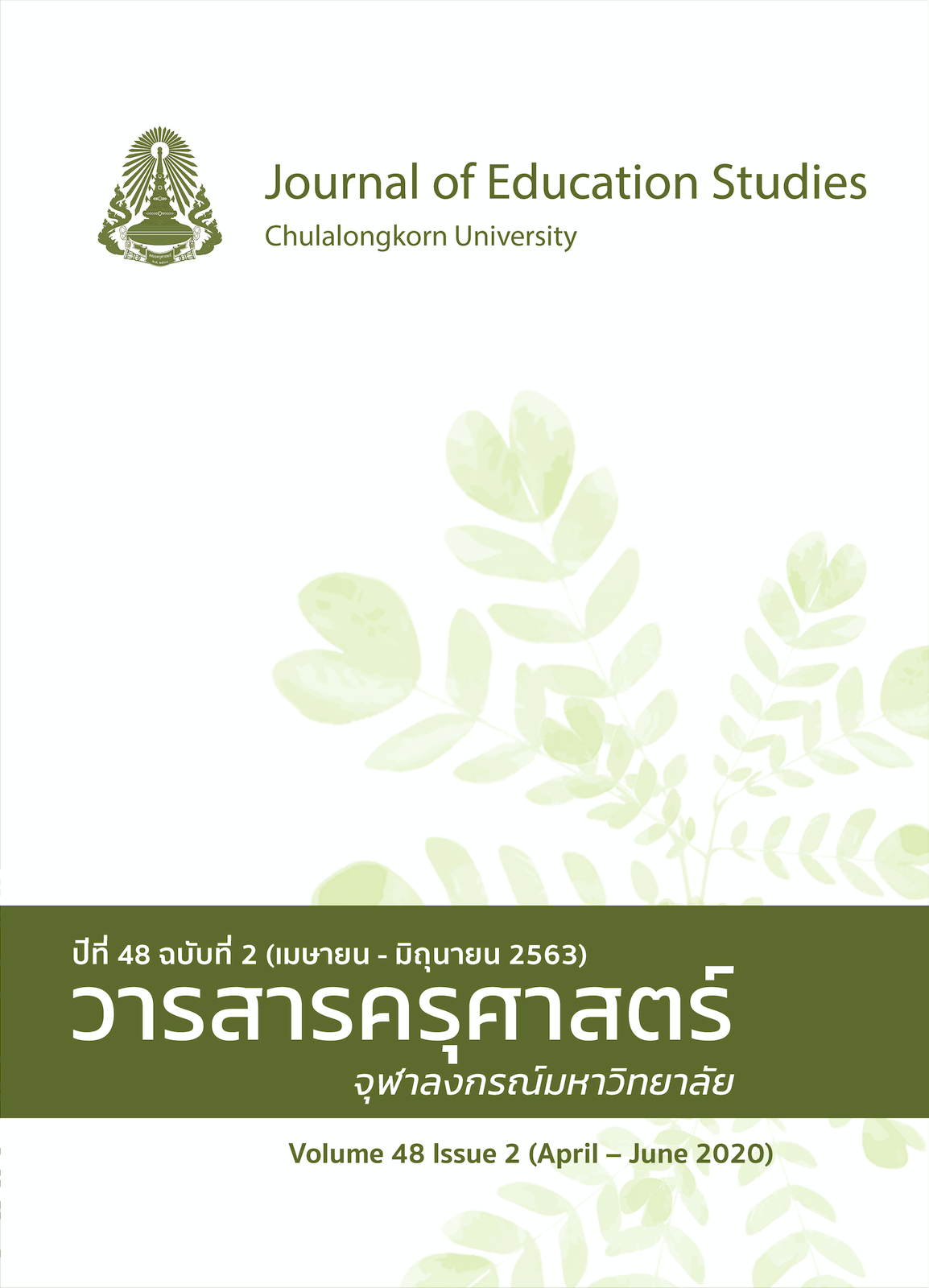Collaborative Factors of Pracharath School Development: Public-Private Dimension
Keywords:
collaborative factors, public-private collaboration, Pracharath SchoolAbstract
This qualitative research aims to analyze and synthesize key success factors of public-private collaboration of Pracharath school enhancement. There were 36 informants consisting of 12 chief executive officers or working-group committee members of participating private companies, 12 representatives from the Minister of Education and 12 principals of the Pracharath schools. The research instruments were in-depth structured interview and participatory observation. Data were analyzed by using inductive method.
The research findings identified five key success factors of Public-Private collaboration for the enhancement of Pracharath school development: 1) shared active vision and goals, 2) shared resources, 3) community engagement, 4) agile leadership, and 5) support and monitoring systems. Other external environment factors facilitating the collaboration were: political support, social values, and technological progress which led to efficient and effective achievement of the Public-Private collaboration goals.
References
กิติพัฒน์ นนทปัทมะดุล. (2554). การวิจัยเชิงคุณภาพในสวัสดิการและสังคม: แนวคิดและวิธีวิจัย (พิมพ์ครั้งที่ 2). ซีเอ็ดยูเคชัน.
กระทรวงศึกษาธิการ. (2562). ผลสอบ O-NET ล่าสุด. ศูนย์เทคโนโลยีสารสนเทศและการสื่อสาร สำนักงานปลัดกระทรวงศึกษาธิการ. https://www.moe.go.th/moe/th/news/detail.php?NewsID=53938&Key=news_Surachet
พิณสุดา สิริธรังศรี. (2556). รายงานการวิจัยและพัฒนาเรื่องรูปแบบการบริหารจัดการสถานศึกษาขั้นพื้นฐาน. มหาวิทยาลัยธุรกิจบัณฑิตย์.
ผู้จัดการออนไลน์. (2560, 20 กันยายน). โรงเรียนประชารัฐวัดคลองสวนเปิดห้องเรียนนอกตำราผุดกิจกรรมเพาะเห็ดสร้างอาชีพ. MGR Online. https://mgronline.com/business/detail/9600000095612
วรัญญา ภัทรสุข. (2554). ระเบียบวิธีวิจัยทางสงคมศาสตร์ (พิมพ์ครั้งที่ 4). จุฬาลงกรณ์มหาวิทยาลัย.
สำนักงานเลขาธิการสภาการศึกษา. (2560). แผนการศึกษาแห่งชาติ พ.ศ. 2560-2579. พริกหวานกราฟฟิค.
ภาษาอังกฤษ
Ainscow, M. (2014). Struggling for equity in education: The legacy of Salamanca. In F. Kuppis & R. S. Hausstatter (Eds.), Inclusive education: Twenty year after Salamance. Peter Lang.
Armstrong, P. (2015). Effective school partnerships and collaboration for school improvement: A review of the evidence: Research report. Digital Education Resource Archive (DERA). https://dera.ioe.ac.uk//24523/
Chapman, C. A., Ainscow, M., Mongon, D., West, M., Gallannaugh, F., Bragg, J., & Armstrong, P. (2009). Emerging patterns of school leadership 2-A deeper understanding: A report prepared for the National College of Leadership for Schools and Children's Services. National College for School Leadership.
DePetris, T., & Eames, C. (2017). A collaborative community education model: Developing effective school-community partnerships. Australian Journal of Environmental Education, 33(3), 171-188.
Frydlinger, D., Nyden, J., & Vitasek, K. (2013). Unpacking collaboration theory. Jeanette Nyden. http://www.jnyden.com/wpcontent/uploads/2013/08/Unpacking_Collaborative_Negotiations_.pdf
Gallardo, S., & Fullan, M. (2016). Essential features of effective networks in education. Journal of Professional Capital and Community, 1(1), 5-22.
Global School Partnerships. (2012). A toolkit: Building sustainable school partnerships. Global Footprints. http://www.globalfootprints.org/files/zones/teach/Key%20GL%20Documents/GSP_Sustainability%20Toolkit_LR_AW.pdf
Hargreaves, D. H. (2012). A self-improving school system: Towards maturity. National College. Hargreaves, A., Boyle, A., & Harris, A. (2014). Uplifting leadership: How organizations, teams and communities raise performance. Jossey-Bass.
Hill, R., Dunford, J., Parish, N., Rea, S., & Sandals, L. (2012). The growth of academy chains: Implications for leaders and leadership. National College of School Leadership.
Hutchings, M., Greenwood, C., Hollingworth, S., Mansaray, A., Rose, A., & Glass, K. (2012). Evaluation of the city challenge programme (Research Report DFE-RR215). Department for Education.
Jacobson, R., Hodges, R. A., & Blank, M. J. (2011). Mutual support the community schools strategy. Principal Leadership, 12(2), 18-22.
Klipsch, J. M. (2011). What works in collaboration: A case study of a facilities partnership between a public school district and a nonprofit organization. Iowa Research Online. http://ir.uiowa.edu/etd/1002
LaRocque, N. (2008). Public-private partnerships in basic education: An international review. Open Learning Campus. https://olc.worldbank.org/sites/default/files/CfBT_LaRocque_PPPs%20in%20Basic%20Education%20An%20International%20Review_0.pdf
Stoll, L. (2015). Three greats for a self- improving school system: Pedagogy, professional development and leadership: Executive summary (Teaching schools R&D network national themes project 2012-14). Department for Education.
West, M. (2010). School-to-school cooperation as a strategy for improving student outcomes in challenging contexts. School Effectiveness and School Improvement, 21(1), 93-112.
Wohlstetter, P., Courtney, L. M., Chau, D., & Polhemus, J. L. (2003). Improving schools through networks: A new approach to urban school reform. Educational Policy, 17(4), 399-430.




